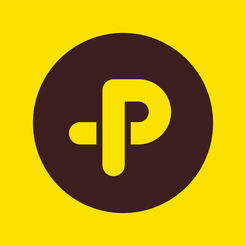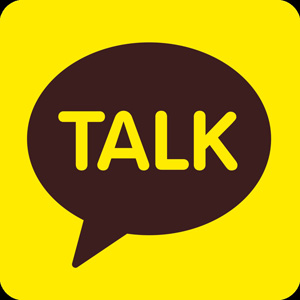
글 수 93
https://support.microsoft.com/en-us/help/12445/windows-keyboard-shortcuts
| Press this key | To do this |
|---|---|
| F1 | Display Help |
| Ctrl + C (or Ctrl + Insert) | Copy the selected item |
| Ctrl + X | Cut the selected item |
| Ctrl + V (or Shift + Insert) | Paste the selected item |
| Ctrl + Z | Undo an action |
| Ctrl + Y | Redo an action |
| Delete (or Ctrl + D) | Delete the selected item and move it to the Recycle Bin |
| Shift + Delete | Delete the selected item without moving it to the Recycle Bin first |
| F2 | Rename the selected item |
| Ctrl + Right Arrow | Move the cursor to the beginning of the next word |
| Ctrl + Left Arrow | Move the cursor to the beginning of the previous word |
| Ctrl + Down Arrow | Move the cursor to the beginning of the next paragraph |
| Ctrl + Up Arrow | Move the cursor to the beginning of the previous paragraph |
| Ctrl + Shift with an arrow key | Select a block of text |
| Shift with any arrow key | Select more than one item in a window or on the desktop, or select text within a document |
| Ctrl with any arrow key + Spacebar | Select multiple individual items in a window or on the desktop |
| Ctrl + A | Select all items in a document or window |
| F3 | Search for a file or folder |
| Alt + Enter | Display properties for the selected item |
| Alt + F4 | Close the active item, or exit the active program |
| Alt + Spacebar | Open the shortcut menu for the active window |
| Ctrl + F4 | Close the active document (in programs that allow you to have multiple documents open simultaneously) |
| Alt + Tab | Switch between open items |
| Ctrl + Alt + Tab | Use the arrow keys to switch between open items |
| Ctrl + Mouse scroll wheel | Change the size of icons on the desktop |
| Windows logo key | Cycle through programs on the taskbar by using Aero Flip 3-D |
| Ctrl+Windows logo key | Use the arrow keys to cycle through programs on the taskbar by using Aero Flip 3-D |
| Alt + Esc | Cycle through items in the order in which they were opened |
| F6 | Cycle through screen elements in a window or on the desktop |
| F4 | Display the address bar list in Windows Explorer |
| Shift + F10 | Display the shortcut menu for the selected item |
| Ctrl + Esc | Open the Start menu |
| Alt + underlined letter | Display the corresponding menu |
| Alt + underlined letter | Perform the menu command (or other underlined command) |
| F10 | Activate the menu bar in the active program |
| Right Arrow | Open the next menu to the right, or open a submenu |
| Left Arrow | Open the next menu to the left, or close a submenu |
| F5 (or Ctrl + R) | Refresh the active window |
| Alt + Up Arrow | View the folder one level up in Windows Explorer |
| Esc | Cancel the current task |
| Ctrl + Shift + Esc | Open Task Manager |
| Shift when you insert a CD | Prevent the CD from automatically playing |
| Left Alt + Shift | Switch the input language when multiple input languages are enabled |
| Ctrl+Shift | Switch the keyboard layout when multiple keyboard layouts are enabled |
| Right or Left Ctrl + Shift | Change the reading direction of text in right-to-left reading languages |
Dialog box keyboard shortcuts
The following table contains keyboard shortcuts for use in dialog boxes.
| Press this key | To do this |
|---|---|
| Ctrl + Tab | Move forward through tabs |
| Ctrl + Shift + Tab | Move back through tabs |
| Tab | Move forward through options |
| Shift + Tab | Move back through options |
| Alt + underlined letter | Perform the command (or select the option) that goes with that letter |
| Enter | Replaces clicking the mouse for many selected commands |
| Spacebar | Select or clear the check box if the active option is a check box |
| Arrow keys | Select a button if the active option is a group of option buttons |
| F1 | Display Help |
| F4 | Display the items in the active list |
| Backspace | Open a folder one level up if a folder is selected in the Save As or Open dialog box |
Windows logo key keyboard shortcuts
The following table contains keyboard shortcuts that use the Windows logo key
| Press this key | To do this |
|---|---|
| Windows logo key | Open or close the Start menu. |
| Windows logo key | Display the System Properties dialog box. |
| Windows logo key | Display the desktop. |
| Windows logo key | Minimize all windows. |
| Windows logo key | Restore minimized windows to the desktop. |
| Windows logo key | Open Computer. |
| Windows logo key | Search for computers (if you're on a network). |
| Windows logo key | Lock your computer or switch users. |
| Windows logo key | Open the Run dialog box. |
| Windows logo key | Cycle through programs on the taskbar. |
| Windows logo key | Start the program pinned to the taskbar in the position indicated by the number. If the program is already running, switch to that program. |
| Shift+Windows logo key | Start a new instance of the program pinned to the taskbar in the position indicated by the number. |
| Ctrl+Windows logo key | Switch to the last active window of the program pinned to the taskbar in the position indicated by the number. |
| Alt+Windows logo key | Open the Jump List for the program pinned to the taskbar in the position indicated by the number. |
| Windows logo key | Cycle through programs on the taskbar by using Aero Flip 3-D. |
| Ctrl+Windows logo key | Use the arrow keys to cycle through programs on the taskbar by using Aero Flip 3-D. |
| Ctrl+Windows logo key | Switch to the program that displayed a message in the notification area. |
| Windows logo key | Preview the desktop. |
| Windows logo key | Maximize the window. |
| Windows logo key | Maximize the window to the left side of the screen. |
| Windows logo key | Maximize the window to the right side of the screen. |
| Windows logo key | Minimize the window. |
| Windows logo key | Minimize all but the active window. |
| Windows logo key | Stretch the window to the top and bottom of the screen. |
| Windows logo key | Move a window from one monitor to another. |
| Windows logo key | Choose a presentation display mode. |
| Windows logo key | Cycle through gadgets. |
| Windows logo key | Open Ease of Access Center. |
| Windows logo key | Open Windows Mobility Center. |



